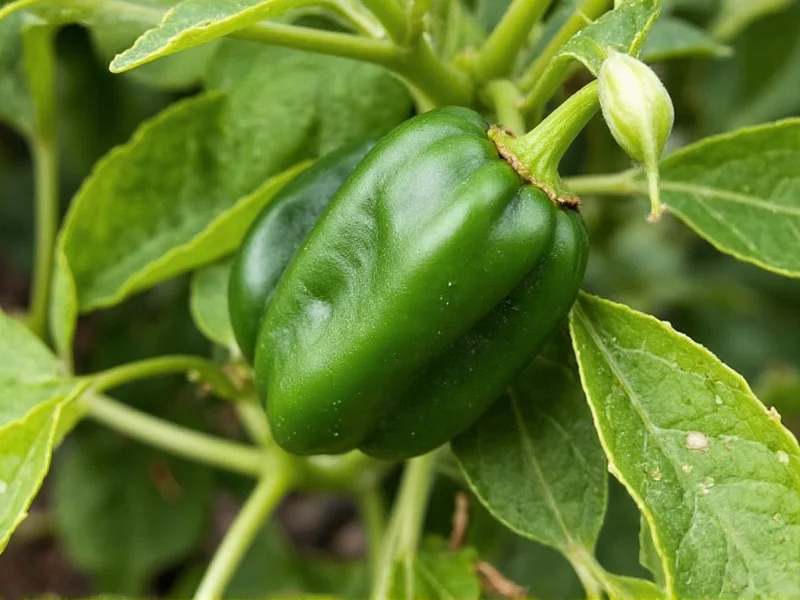Understanding the transformation from fresh to dried poblano is essential for any serious home cook exploring authentic Mexican cuisine. The drying process concentrates the pepper's natural sugars while developing complex smoky notes, creating a versatile ingredient that forms the backbone of many traditional sauces and stews.
What Makes Ancho Peppers Unique
When poblano peppers ripen to deep red and are carefully dried, they become anchos. This transformation isn't merely physical—it represents a complete flavor evolution. Fresh poblanos offer grassy, vegetal notes with moderate heat, while dried versions develop raisin-like sweetness with subtle tobacco and coffee undertones.
The name "ancho" means "wide" in Spanish, referring to the pepper's broad, heart-shaped form. Properly dried anchos should feel leathery but pliable, with a deep mahogany color and intense aroma. Avoid brittle, faded specimens which indicate age and flavor loss.
| Characteristic | Fresh Poblano | Dried Poblano (Ancho) |
|---|---|---|
| Heat Level | Mild (1,000-2,000 SHU) | Mild (1,000-2,000 SHU) |
| Flavor Profile | Grassy, vegetal, earthy | Sweet, fruity, smoky, raisin-like |
| Texture | Firm, thick-walled | Leathery, pliable when fresh |
| Common Uses | Rajas, chiles rellenos | Moles, adobos, salsas |
Essential Culinary Applications
Ancho peppers shine in traditional Mexican preparations where their nuanced flavor can develop fully. The most celebrated use appears in mole poblano, where dried poblanos combine with chocolate, spices, and other chilies to create that iconic complex sauce. For authentic results, always toast dried peppers briefly before rehydrating—a critical step that unlocks additional flavor dimensions.
When working with dried poblano peppers substitute options, consider these applications:
- Sauces and moles: Blend rehydrated anchos with tomatoes, garlic, and spices
- Marinades: Create paste with rehydrated peppers for meats
- Stews: Add whole dried peppers to simmering liquids
- Spice blends: Grind into powder for rubs and seasoning mixes
Proper Rehydration Technique
Mastering how to rehydrate dried poblano peppers properly makes or breaks your dish. Start by removing stems and seeds, then toast whole peppers for 20-30 seconds per side in a dry skillet until fragrant. Place in a bowl, cover with boiling water, and weigh down with a plate to keep submerged. Soak for 15-20 minutes until pliable but not mushy.
Never skip the toasting step—it develops crucial flavor compounds through the Maillard reaction. For deeper flavor, substitute part of the water with broth, beer, or even coffee when rehydrating dried poblano peppers for mole.
Finding Quality Dried Poblanos
When learning where to buy dried poblano peppers, seek out Mexican markets for the freshest inventory. Look for peppers that are deeply colored (not faded), flexible (not brittle), and emit a strong, sweet aroma. Specialty spice shops often carry higher quality dried chilies than standard supermarkets.
Proper storage extends shelf life significantly. Keep dried poblanos in airtight containers away from light and heat. For longest preservation, store in the freezer where they'll maintain peak flavor for up to two years. Always check dried peppers for moisture before storing to prevent mold development.
Substitution Guidance
Understanding dried poblano pepper substitute options prevents recipe failures when anchos aren't available. Guajillo peppers offer similar mild heat with brighter fruit notes. Pasilla peppers provide comparable earthiness with slightly more heat. For closest flavor match, combine mulato (for sweetness) and guajillo (for fruitiness) peppers.
Avoid substituting significantly hotter chilies like chipotles unless adjusting quantities dramatically. Remember that each dried chili brings unique flavor compounds—while substitutions work in emergencies, they'll alter the dish's character.
Nutritional Benefits
Dried poblano peppers retain impressive nutritional value despite the dehydration process. They're rich in vitamin A (as beta-carotene), vitamin C, and capsaicinoids that support metabolic health. The drying process actually concentrates certain antioxidants compared to fresh counterparts.
One tablespoon of ground ancho pepper contains approximately 8 calories, 1g fiber, and delivers 15% of your daily vitamin A requirement. These nutritional attributes make dried poblanos a healthful addition to balanced diets when used appropriately in cooking.
Signature Recipes Featuring Ancho Peppers
Authentic mole negro demonstrates dried poblano peppers' transformative power when combined with other Mexican chilies. For simpler applications, try adding rehydrated anchos to black bean soup or blending into a smoky tomato salsa. Roasted sweet potato tacos with ancho crema showcase modern applications of this traditional ingredient.
Professional chefs often create ancho-infused oils by steeping toasted pepper pieces in warm oil—a versatile base for dressings and finishing dishes. This technique extracts maximum flavor while maintaining the pepper's delicate heat profile.
Final Considerations
Mastering the use of dried poblano peppers opens doors to authentic Mexican cuisine. Remember that quality ingredients produce superior results—seek fresh, flexible anchos with deep color and strong aroma. Always toast before rehydrating to maximize flavor potential, and store properly to maintain peak quality. Whether crafting traditional moles or experimenting with modern applications, ancho peppers deliver that distinctive sweet-smoky complexity that defines so many beloved Mexican dishes.











 浙公网安备
33010002000092号
浙公网安备
33010002000092号 浙B2-20120091-4
浙B2-20120091-4